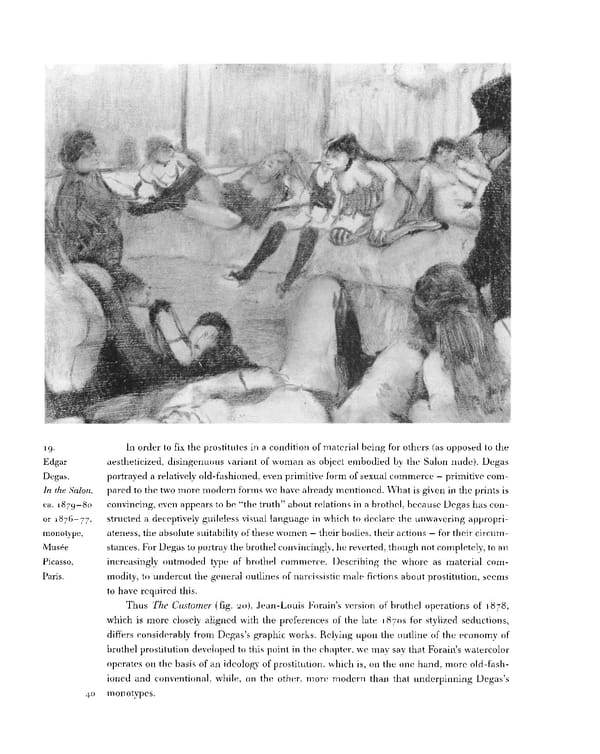1 In order to fix the prostitutes in a condition of material being for others (as opposed to the 9- Edgar aestheticized, disingenuous variant of woman as object embodied by the Salon nude), Degas Degas, portrayed a relatively old-fashioned, even primitive form of sexual commerce — primitive com- In the Salon, pared to the two more modern forms we have already mentioned. What is given in the prints is ca. 1879 — 80 convincing, even appears to be "the truth" about relations in a brothel, because Degas has con- or 1876—77, structed a deceptively guileless visual language in which to declare the unwavering appropri- monotype, ateness, the absolute suitability of these women — their bodies, their actions — for their circum- Musee stances. For Degas to portray the brothel convincingly, he reverted, though not completely, to an Picasso, increasingly outmoded type of brothel commerce. Describing the whore as material com- Paris. modity, to undercut the general outlines of narcissistic male fictions about prostitution, seems to have required this. Thus The Customer (fig. 20), Jean-Louis Forain's version of brothel operations of 1878, which is more closely aligned with the preferences of the late 18708 for stylized seductions, differs considerably from Degas's graphic works. Relying upon the outline of the economy of brothel prostitution developed to this point in the chapter, we may say that Forain's watercolor operates on the basis of an ideology of prostitution, which is, on the one hand, more old-fash- ioned and conventional, while, on the other, more modern than that underpinning Degas's 40 monotypes.
 Prostitution & Impressionists Page 60 Page 62
Prostitution & Impressionists Page 60 Page 62